This is the interpretation of one of our travel guru’s recent trip to Chile, a country packed with diversity and charm. It is a country that would impress the most jaded traveller. Our travel guru also believes that the most seasoned armchair traveller would be encouraged to don hiking boots in order to explore the unknown and the remote. Chile is best known for her high octane high altitude adventures such as snowboarding, mountaineering and trekking. Top of the agenda too is an exceptional culinary journey which goes hand in hand with some of the most delicious New World wines.
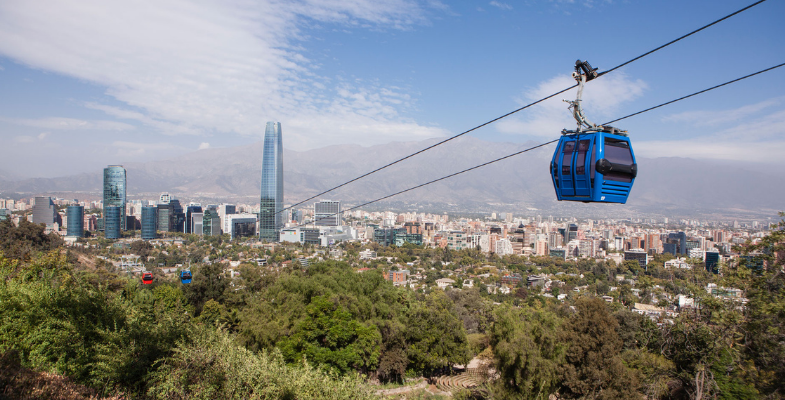
Santiago, South America’s ‘hidden gem’ – is a contemporary city located at the foot of the Andes and surrounded by vineyards stretching all the way down to the Pacific coast. This modern city boasts top brand hotels such as the Regency, The W, Four Seasons and several other boutique style hotels. Also on offer are world class restaurants, clubs, wineries and impressive snow fields such as Valle Nevado.
It is possible to spend a few hours surfing tubes along the frigid Pacific and snowboard a few hours later in the untamed Andean winter wonderland. The most striking feature of the city is the formidable Andean Mountain range and snow covered peaks which are less than an hour’s drive from the city centre. The lofty mountain peaks, cool sea air and air pollution, unfortunately, creates a toxic purple smog blanket which has earned Santiago the unenviable title as the ‘second most polluted city’ after Mexico City.

Two hours south by air is Punta Arenas, gateway to Patagonia, Tierra del Fuego, Cape Horn, Estrecho de Magallanes and Antarctica. This is not a pretty city, windswept for most of the year and bitterly cold even in summer. Wind speeds of 120km/ph is not uncommon. This city has a real frontier vibe and boasts a few handsome period buildings, packs of stay dogs and locals wrapped up in multi layered thermal clothing.
The Conquistadors managed to obliterated most of Patagonia’s First People and not much remains today of this ancient civilisation and their sophisticated culture. Patagonia (patagon) is an old Spanish word used by Magellan to describe the Tehuelches – giant like tribes that towered above the newly arrived settlers. Consuming copious amounts of Pisco Sour seems to be the only way to make light of a hard but slow life lived at the end of the world.
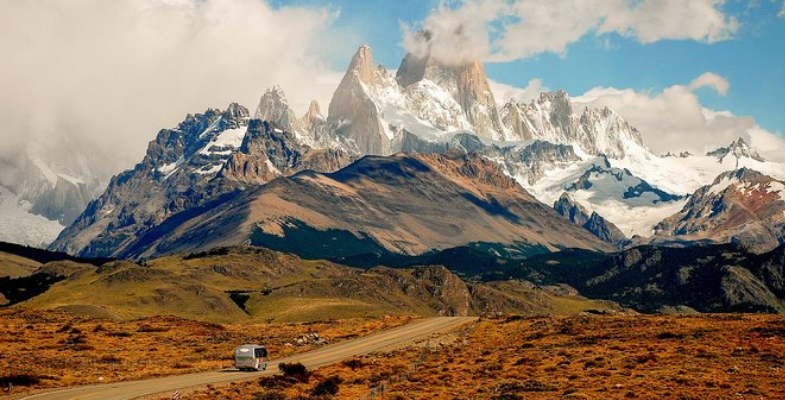
Along a scenic blizzard prone road – approximately 2 ½ hours north of Puerto Arenas is Puerto Natales another town from another world. This is adventure city central. Think Swakopmund on the artic border. Some of the popular distractions include Patagonian fjord cruising, kayaking, biking, hiking, camping, rock climbing, trekking etc. This is a good place to learn the difference in taste between Guanacos, Llamas and Alpacas – but first the tummy needs a good coating of Pisco Sour.
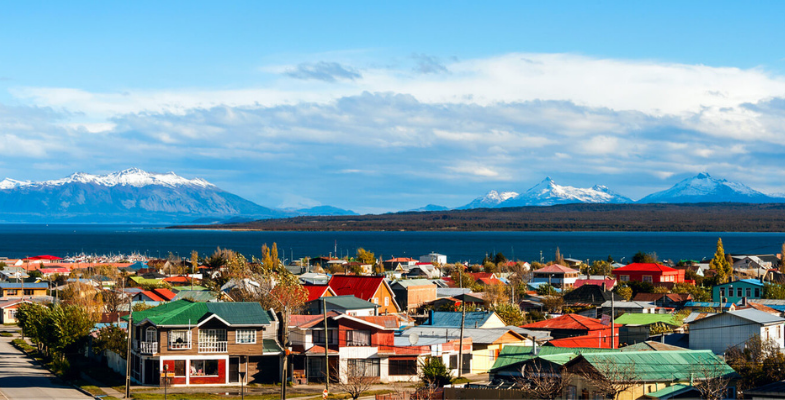
Chilean contemporary architects and designers do minimalism well – as is evident in some of the spectacular hotels and retreats to be found along the lakes and glacier fields of Patagonia. Recommended accommodation would be the Indigo Hotel overlooking Golfo Almte Montt or our personal favourite in this part of the world is has to be the Remota Hotel.
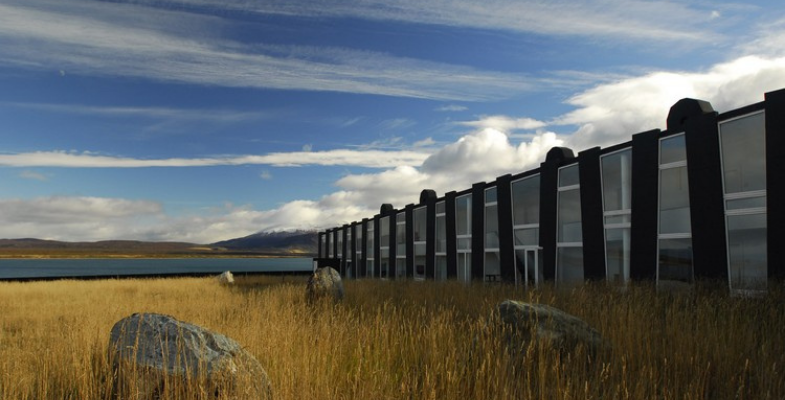
No visit to the Chilean Patagonia would be complete without exploring Parque Nacional Torres del Paine. This is by far one of the most spectacular places our travel guru has visited in their globe-trotting quest. Torres del Paine was declared a national park in 1987 and is home to a wide variety of fauna and flora as well as frozen lakes, glaciers, volcanoes, thermal springs, Anacondas and majestic mountain vistas – with the signature sight being the Torres Massif. Camping and hiking is the big thing here. However, Explora manages a top-end retreat in the park – but for the more budget-conscious there is Lago Grey. Where else can one lie back in your bed and watch the sun play across an ancient glacier at the end of a lake?
Adding to the impressive diversity of Chile, and a mere 2 hours north of Santiago is the impressive Atacama desert. Land locked with Peru to the north and Bolivia to the east, this is officially the world’s driest desert. Cobalt blue skies meet passengers as they are disgorged from their LAN flight at a tiny airport surround by gravel plains – a scene that brings back memories of Walvis Bay Airport. A modern road cuts through the barren lands and connects San Pedro de Atacama with Chile’s riches – two of the world’s largest mines are located here namely copper and lithium.

It is commonly accepted the ‘feel good’ approach of the local inhabitants with their accompanying smiles and touchy feely nature is due to lithium dust particles that permeates the air. However, it is a well-known fact that Atacama is famous for her powerful psychedelic cacti (such as the San Pedro cactus – cultivated in the smallest of gardens, coffee tins and front porches) and the ever-present Bolivian marching powder.
The indigenous Indian culture is probably the most intact in this spectacular wilderness. The scenery is simply astounding – with no less than 21 snow-capped volcanoes towering above endless plains and vast salt pans. Here the Andes form a spectacular back drop to a world seemingly devoid of life.
Several of Chile’s top hotels are located in close proximity to San Pedro de Atacama, the ‘greenest’ hotel is probably Alto Atacama with its enviable setting in a remote gorge. More upmarket is Tierra Atacama offering beautiful public spaces with stupendous views across the void. The best address in San Pedro is Explora Hotel clinically chic with signature asylum white walls, Spartan guest rooms with beautifully crafted furniture.
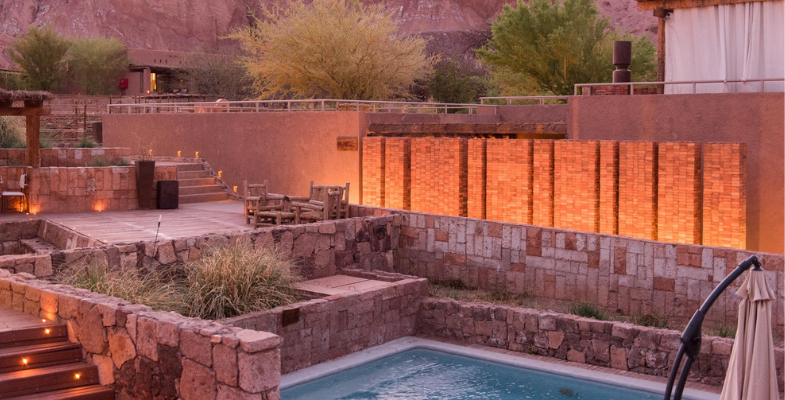
Chile is an exciting destination for both FIT’s (free independent traveller) and MICE (meeting, incentive conference or event) business. It is a long skinny country power-packed with some of the most spectacular scenery to be found.
Want us to plan your incentive trip? Drop us a message.
